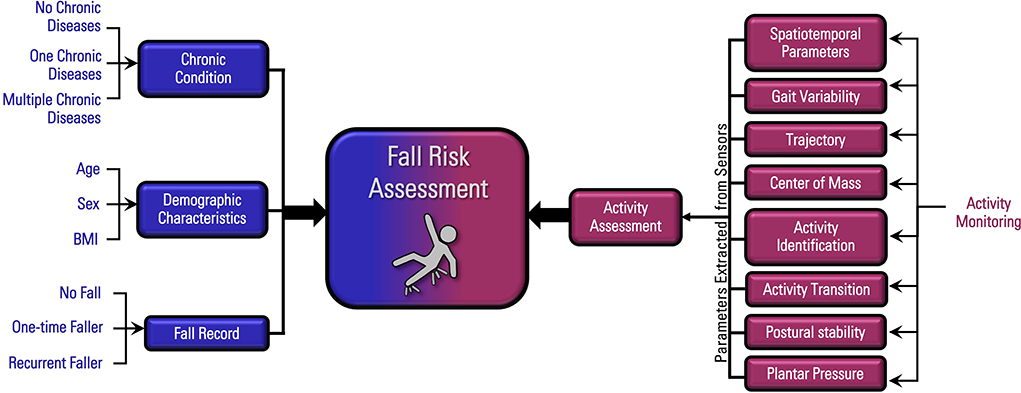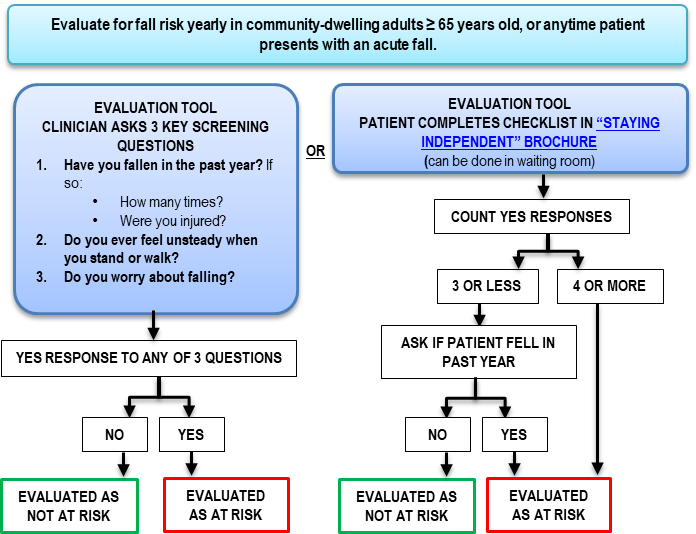How Dementia Fall Risk can Save You Time, Stress, and Money.
Dementia Fall Risk for Dummies
Table of ContentsThe 8-Second Trick For Dementia Fall RiskThe Greatest Guide To Dementia Fall RiskThe Of Dementia Fall RiskDementia Fall Risk Things To Know Before You Buy
A fall threat analysis checks to see just how most likely it is that you will certainly drop. It is primarily provided for older adults. The assessment usually includes: This includes a series of concerns regarding your overall health and wellness and if you have actually had previous falls or issues with balance, standing, and/or strolling. These devices test your toughness, equilibrium, and stride (the method you stroll).Interventions are suggestions that might reduce your risk of dropping. STEADI includes 3 actions: you for your risk of falling for your risk factors that can be boosted to attempt to protect against falls (for example, balance troubles, damaged vision) to decrease your risk of dropping by utilizing efficient strategies (for example, supplying education and sources), you may be asked a number of questions including: Have you dropped in the previous year? Are you worried about falling?
If it takes you 12 seconds or even more, it may imply you are at greater danger for a fall. This examination checks toughness and equilibrium.
Relocate one foot halfway forward, so the instep is touching the big toe of your various other foot. Move one foot completely in front of the other, so the toes are touching the heel of your other foot.
What Does Dementia Fall Risk Mean?
Many falls happen as an outcome of multiple contributing elements; for that reason, taking care of the threat of falling begins with recognizing the factors that add to drop threat - Dementia Fall Risk. Several of one of the most appropriate risk aspects consist of: Background of previous fallsChronic clinical conditionsAcute illnessImpaired gait and balance, lower extremity weaknessCognitive impairmentChanges in visionCertain risky medications and polypharmacyEnvironmental factors can additionally boost the risk for falls, consisting of: Poor lightingUneven or damaged flooringWet or slippery floorsMissing or harmed handrails and order barsDamaged or improperly fitted devices, such as beds, mobility devices, or walkersImproper usage of assistive devicesInadequate guidance of the individuals residing in the NF, consisting of those who exhibit hostile behaviorsA effective fall risk administration program needs an extensive professional assessment, with input from all participants of the interdisciplinary group

The treatment strategy need to likewise consist of interventions that are system-based, such as those that advertise a risk-free atmosphere (ideal lighting, handrails, order bars, etc). The efficiency of the treatments ought to be assessed occasionally, and the treatment strategy changed as essential to show changes in the fall danger analysis. Carrying out an autumn risk management system using evidence-based ideal practice can reduce the occurrence of falls in the NF, while restricting the possibility for fall-related injuries.
About Dementia Fall Risk
The AGS/BGS guideline advises screening all grownups aged 65 years and older for loss danger each year. This testing is composed of asking patients whether they have actually fallen 2 or even more times in the past year or looked for medical interest for a fall, or, if they have not fallen, whether they really feel unstable when strolling.
People that have actually fallen once without injury needs to have their equilibrium and stride examined; those with stride or balance irregularities need to receive extra assessment. A background of 1 loss without injury and without stride or balance issues does not warrant more assessment past continued annual autumn threat screening. Dementia Fall Risk. A fall threat analysis is called for as component of the Welcome to Medicare exam

Dementia Fall Risk for Beginners
Documenting a drops history is among the top quality indicators for fall prevention and management. A crucial component of risk evaluation is a medicine review. A number of courses of drugs raise fall threat (Table 2). copyright medications in specific are independent forecasters of falls. These medicines often tend to be sedating, change the sensorium, and impair equilibrium and stride.
Postural hypotension can frequently be relieved by view it now reducing the dosage of blood pressurelowering drugs and/or quiting medicines that have orthostatic hypotension as a side result. Use of above-the-knee assistance tube and copulating the head of the bed elevated may also decrease postural reductions in high blood pressure. The suggested aspects of a fall-focused physical examination are received Box 1.

A click here for info yank time above or equal to 12 seconds recommends high autumn danger. The 30-Second Chair Stand examination examines lower extremity toughness and balance. Being incapable to stand from a chair of knee have a peek at this site elevation without utilizing one's arms shows raised fall risk. The 4-Stage Balance examination examines fixed balance by having the client stand in 4 positions, each gradually much more tough.